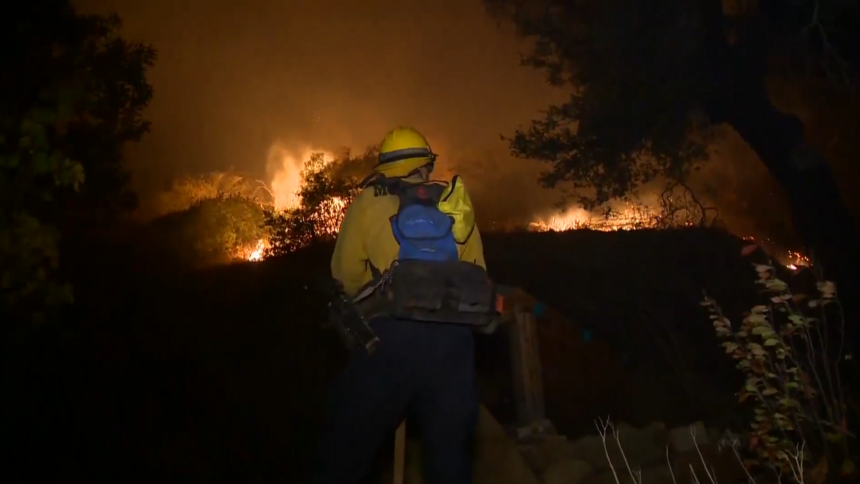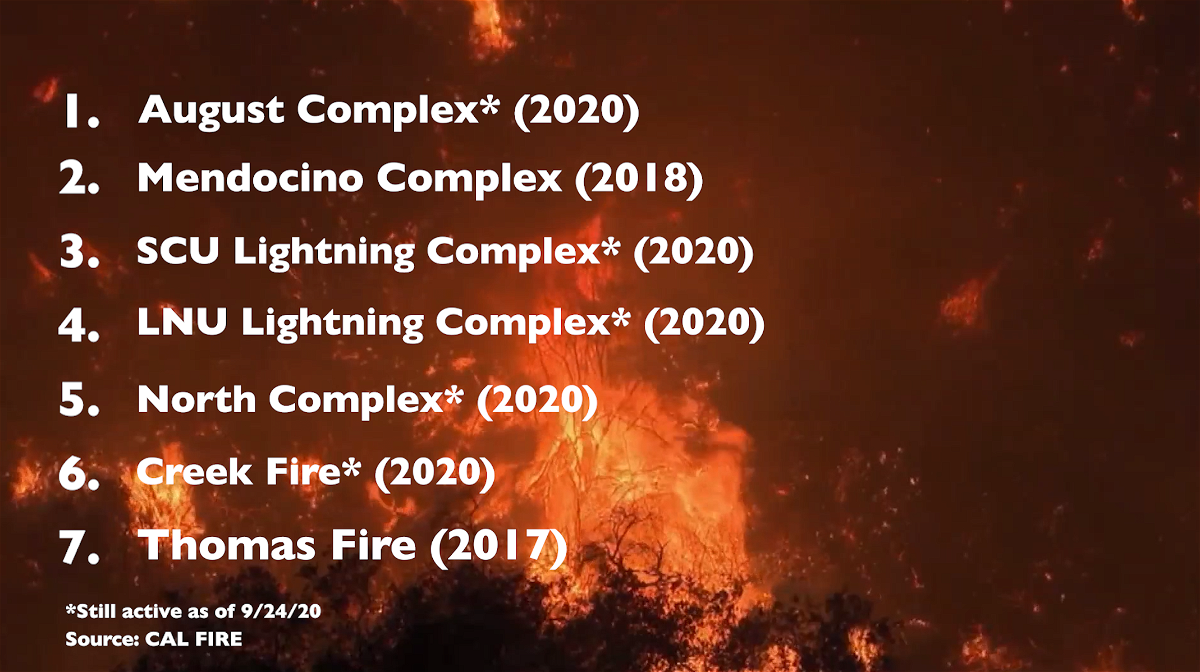Record-breaking flames are now firefighters’ reality

SANTA BARBARA COUNTY, Calif. - The Thomas Fire burned through more than 280,000 acres as it raced through Ventura and Santa Barbara counties in 2017.
It was devastating and record-breaking. At the time, it became the largest wildfire in modern California history.
“We had 8500 firefighters battling the Thomas Fire, which was the largest amount of fire resources on a fire in California,” veteran Santa Barbara County firefighter Mike Eliason recalled. “But even that could not stop that fire. At the height of that fire, it was burning more than a football field a second as it marched to the west and up the coast.”
But the Thomas Fire was surpassed as the state's largest fire after only eight months. Less than three years later, it's now just the seventh-largest fire in state history.

“I’ll be honest, I’m not really that surprised,” said Aaron Briner, Fire Marshal and Battalion Chief for Montecito Fire. “This was an enormous fire, the biggest in state history and already the next year it’s been surpassed. And I think that set the tone and kind of prepared us mentally for: this truly is normal now. It’s not our ‘new normal.’ It’s normal. And I think it’s just been proven over the last five years.”
Of the six fires that are now larger than the Thomas Fire, five have started in the past two months and are still actively burning as of Thursday evening.
Wildfires are not just larger on average, but more volatile. Mark Jackson, a Meteorologist In Charge at the National Weather Service in Oxnard, says drier fuels across the state have, in part, led to that change in fire behavior.
Jackson says California has generally seen warming temperatures on an annual basis since the early 1970s, and that 13 of the past 20 years have produced below-normal precipitation across the state.
“The very longer period of dry years, it creates a build-up of dead fuel,” Jackson said. “Now you have interspersed in that period, very wet years… And then when you get these wet years, you get a big build-up of finer fuels: grasses and smaller brush. The type of vegetation that can catch [fire] very quickly and spread very quickly.”
“It’s science,” Eliason said. “And you have to start to believe this and embrace this. That there are no climate deniers on the fire lines. They see it firsthand: the erratic behavior that these firestorms create.”
“I don’t know that climate change is this long term ‘what’s causing it, what’s affecting it,’ if this is just a cyclical change in the climate,” Briner said. “Regardless of that argument, [Climate Change] is occurring… it is affecting fire behavior.”
Jackson warns against pointing to a single fire or even a single fire season as solely the product of Climate Change, but he did urge caution given the climate trends in recent decades.
"Climate Change is the study of longer-term trends of weather and seasons," Jackson said. "But still, there's growing evidence that--especially for the Western U.S., in terms of warming temperatures, in terms of drying conditions--that there are ingredients there to produce very dangerous wildfire seasons.
"People need to understand that, people need to be ready, people need to respect that," he added.
Jackson says it's critical that everyone have a 'Ready, Set, Go' plan to protect their homes and be ready to evacuate at a moment's notice when given an order by local authorities.
More people moving into wildlife-urban interface have also made recent wildfires more deadly and destructive, putting an emphasis on preparedness and evacuation plans.
Briner acknowledged that firefighters now have to "give up" more land to beat a wildfire to a certain location, because a fire now is usually "moving faster than it did before."
“Our boxes our bigger, unfortunately, which encompasses more communities," he said. “We have multiple teams now—incident management teams—that are having to manage a single fire. Because geographically it’s so large, you can’t have one team."
Solving the issue itself has proven to be even more difficult than fighting these raging fires.
More planned burns and thinning of forests and brush can eliminate vulnerable fuels, but many argue that too much of the state's land would have to burn in order for firefighters to see a noticeable improvement in wildfire behavior.
As groups across the country grapple with potential solutions, the current climate trend would likely need a stunning reversal to make California's fires more manageable.
“We would have to have, I would think, multiple years—say six out of the next eight years—that are maybe wetter than normal to really help to kind of get things back,” Jackson said.
In the meantime, Californians can only stay ready and hope for the relentless flames to relent a bit. But many firefighters now expect to see more of the same, or worse, every year.
“I’m getting kind of tired of saying that every year: that this is biggest fire, and then next year is the biggest fire and then the following year is the biggest fire,” Eliason said. “It’s very demoralizing to know… that record will fall again.”
